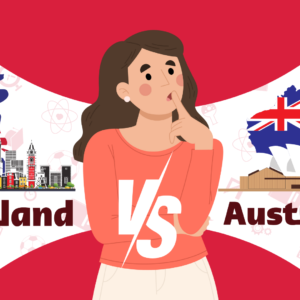The pandemic has had some unimaginable consequences. Surely they follow a logical sequence of events, but we have all been caught up with our own survival that some of its impacts come as a surprise to us. One such story is that of the creative economy. Keep reading to see how coronavirus altered the nature of the arts industry. Maybe it is time for us to rewrite its story.
Creative economy is defined as the totality of individuals and businesses that produce the cultural, artistic and innovative products and services. This system also includes space where creators can freely present their works, receive feedback and exchange ideas. It includes everyone, from individual artists to large multinational production houses. In essence, it is the space where imagination and creativity is valued––a market for ideas, if you will. The entertainment industry forms a major part of it. So do artists and technicians associated with the production of art. It is a market wherein the value of a commodity is determined by its originality and creativity.
Like any other industry in the pandemic, the entertainment industry also took a massive hit. “Dance and drama take a backseat when people’s lives are at stake.” This statement seems perfectly logical and is true… to an extent. However, the lives of the people involved in the production of the said dance and drama, and sports, movies, fashion, concerts, music festivals, and TV shows for that matter, have not been the same since the pandemic hit. It is the difference in perspective between ‘just entertainment’ and ‘livelihood’. Just to give you a sense of scale, Hollywood alone supports over 2 million jobs and 4,00,000 American businesses. There is an estimate that shows that the Hollywood movie business has lost $2.15 billion in just box office revenue. The performing arts industry in UK, where the theatres alone employ over 2,90,000 people, calculated a potential loss of about 61% of its turnover due to lockdown and social distancing norms. In India, 67% of workers associated with the creative industry are worried about surviving past a year.
When we think of the entertainment industry, our minds usually jump to the glamour and pizzazz. The star and the designer labels take centre stage. Granted, it is the nature of their job but, when you peek behind the curtains, there are hundreds of people who make it happen. This population is generally made up of freelancers who work from project to project, or those associated with micro-enterprises. In India, the entire cultural sector is informally organised. There is no policy or a powerful organisation to protect the interests of the members, leaving them particularly vulnerable to the impacts of the pandemic.
In another sphere, the performing arts community of the world has been massively displaced due to social distancing regulations, effectively severing their biggest source of income. While some artists do take to online platforms to display their art, the patronage is not the same. People’s loyalties to their favourite artistes or stars are being severely tested in the face of a global pandemic and crowd funding is not sustainable for all performers.
COVID also caused film and TV production to come to a standstill. As work resumes with the dawn of the new year, the sense of fear created by the virus has made people wary of movie theatres. Even with the relaxation of lockdown rules, the screens themselves and the entire ecosystem of businesses built around movie theatres are barely making ends meet––from your favourite popcorn seller to cleaning services. Reduced occupancies and lingering panic continue to haunt the screens.
Interestingly, the movie-centered industry was in the middle of a paradigm shift even before the pandemic hit. Streaming Video on Demand (SVoD) services like Netflix, Prime, and Disney Plus Hotstar were giving traditional theatre operators a run for their money. These streaming services provided a lot more flexibility to viewers than cinema halls that had geographical and time restrictions. This was a huge hit to independent screens and chains such as PVR and INOX who had spent millions on improving comfort and audiovisual tech. The lockdown exacerbated this problem and handed over the future of films to SVoD. Now, production houses and movie studios invest in streaming services for their survival and to mitigate the costs of playing movies on screens with limited screen time. When content directly goes digital, it is a huge hit at the box office.
The entire scenario is laced with irony. The lockdown did have an impact on how we consume entertainment. We have been glued to our television screens more than usual. Yet, from the production standpoint, loyalties are shifting towards online streaming that places traditional screens in jeopardy.
As the industry appears to be hanging by a thread, what does its future look like? What can be done to support all those who contribute to this economy? Government intervention is required. Schemes to support workers in creative industries are rare but as Mr Toussiant Tiendrebeogo, Chief of Diversity of Cultural Expressions Entity, UNESCO said, “At a time when all countries are working tirelessly in response to this unprecedented crisis, UNESCO firmly advocates for the cultural and creative industries not to be left behind.” United Nations General Assembly has also proclaimed 2021 as the International Year of Creative Economy for Sustainable Development.
The private sector has played a major role in supporting the members of the creative industry. Sony, Universal and Warner have contributed to the relief efforts by combining charitable donations, royalty advances, and fee waivers. Similarly, some of the major streaming services including Netflix, NBCUniversal, ViacomCBS, and others have donated with millions of dollars as funds, PPE kits, and awareness campaigns. Several countries have grants to provide financial support to organisations that sponsor artists but individuals and technical support staff are often lost in the cracks.
The bottom line is that the industry is struggling and needs support. It begins with a conversation that reaffirms the importance of the creative economy to the market and our lives. We also need to bridge the digital skills gap that exists in the industry so that editors, technicians, the invisible, yet the very real backstage, can adapt themselves to the future trends of the economy.
Art does play a major role in building more inclusive and tolerant societies. It is an expression of our most vulnerable and volatile thoughts, our passions. It is far removed from the sense of necessity, obligation, or sustenance. As John Keating says in Dead Poets Society, “Poetry (all art, in general), beauty, romance, love, these are what we stay alive for.” As enriching as it is for those who experience it, for those involved in its production, it is a story worth fighting for.







